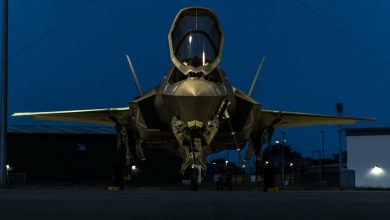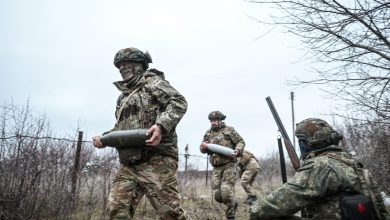Analysis: Freezing to death in the new ‘Cold War’

Ukraine and the economic/food/energy/supply chain crisis are fueling two great fears. One is the likelihood of a more burning war that includes multiple countries. The second is the potential of “public movements/revolts” outbreaks in Europe-centered countries, either individually or together with war.
Germany, Italy, Czechia, France, and the U.K. are already experiencing demonstrations and protests that can be considered the premises of internal unrest.
Thousands of people have already started to gather for street demonstrations in Germany, the bulwark of the European economy. These are still “regular” objections. There is no vandalization or rampage involved. Everybody is concerned about winter, and the events that may intensify subsequently.
The fluctuations experienced by German countries accompany fears as well. Almost a-century-old toilet paper producer Hakle’s application for bankruptcy is an example that can no longer be considered an exception. In macro terms, oil prices that will add fuel to the current energy crisis are expected to flare. The “OPEC+” countries’ finance ministers decided in their meeting to set a daily 100-thousand-barrel limit. Spot markets are already on fire. (In this respect, this is the first time the “Cold War” is becoming palpable.)
A series of serious studies indicate global civil unrest. In addition to the abovementioned European countries, everybody includes the Netherlands, Spain, Sweden, and Bosnia-Herzegovina among the high-risk countries. Increasing risks in this sense are observed in 101 of 198 countries in the last semi-annual period, rather than in single, individual states. These are not any ordinary sparks. The highest rates are in question since 2016 when the “Civil Unrest Index” was first developed. (“Inflation and War are stoking civil unrest across globe, research shows,” 02/09, Bloomberg.)
***
Of course, this impacts the “big picture” as well.
According to the American “Foreign Policy,” what you just read is the tip of the iceberg. They are expecting a war between superpowers.
They are writing that “globalists” have been defeated, the dependent system has collapsed, and that the great war is at the door.
It is clear that there are firm and severe criticisms against the single-pole world order, and that countries are taking steps adjusted to this. This is the general atmosphere in the world. Heated discussions are already in question, but this much crisis and showdown needs a finale. Foreign Policy thinks the curtain will close with the war or superpowers – or even open with it, for that matter!
If we go over it all again, the theory that international institutions alleviate or prevent tensions between states can’t be defended.
It is true that economic relations/competition costs less than wars, but it was not implemented in a “fair/just” manner. There is nothing more dangerous than injustice or money.
U.S. reputation, the “protector” of the established economic and political system is in shambles. Everyone is begging, “please don’t protect me.” Hence, “American values enveloping the political and economic system” no longer have any value.
This thus gives rise to a “void,” which we can call the black hole because it is the center of gravity for all collapses and bankruptcies. The price for the – highly likely – defeat in Ukraine, following Afghanistan, will be paid by the West.
Hence, this leads us to a “likely showdown or highly destructive wars between superpowers” regarding world leadership or sharing this leadership. Because Ukraine multiplied the magnetic effect of political poles, countries started to gather in these poles.
We are expanding our arguments today through regional conflicts/wars, and stubbornness between countries, but everybody senses that we are watching the opening moves of showdowns between Russia and the U.S., and between China and the U.S. They at least remind the world of the truth that super powers equipped with thousands of nuclear warheads in their inventories can also war.
One possibility, according to Foreign Policy, is that state-of-the-art technology will be seen on the ground in the war of superpowers. So, in other words, they are not nuclear, but they are death machines with proven heightened destruction capacity, speed, and effectiveness.
The first question that comes to mind is “which weapons they will try to palm off to the world,” but that’s where the matter lies.
Kherson front
You are probably aware that the number of Turkish media reports on the Ukraine war is dropping. Some days there is no mention at all in newspapers. A similar case is in question in Europe as well. It comes up on the agenda due to the economic/food/energy crises that will be experienced in their countries because of sanctions.
Military and financial support to Ukraine is not in abundance either. Hence, Kyiv is appearing more on the ground. Nobody is even discussing the results of the attack they launched – it’s already been a week. Neither Kyiv nor the U.S. or European capitals are making concrete statements.
Russia is speaking more openly, but as it is one-sided, it is difficult to pin down the focus. According to them, the counterattack was long crushed, and the military is progressing towards its goals. Yet, it is certain that “thousands” of young soldiers on both sides have died and tens of thousands are injured. It is a great trauma.
The heart-wrenching reality is that the perpetrator of these great pains is thousands of kilometers away, with their feet on the table, while seeking ways to extend the war without “defeat” until Congress elections.
Surely it won’t be long before U.S.-Europe relations face political consequences. It is seen that “winter is coming’s” Atlantic alliance will question the Washington administration, and in any case, European capitals.
Once this starts, it will already be post-“level one” of this “New World” game.





